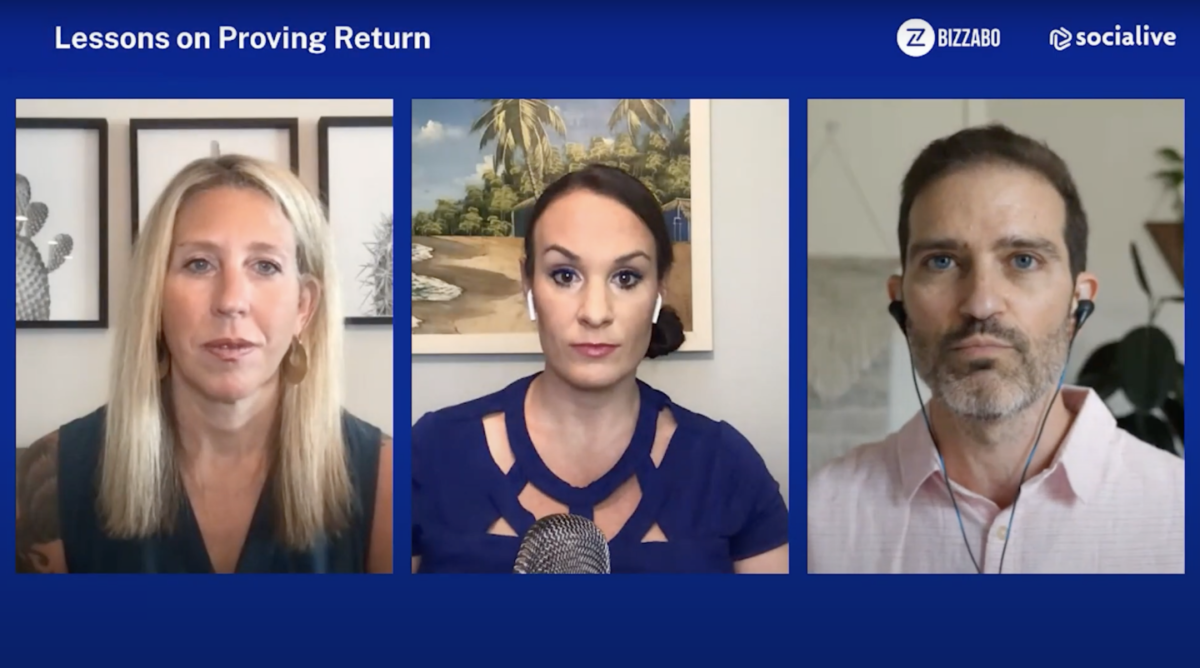In a hybrid era, is your business prepared to maximize its return of events?
On May 27, Socialive and Bizzabo co-hosted “From Virtual To Hybrid: How To Drive Return On Events in 2021,” a panel featuring event marketing leaders Sarah Reed from Zendesk and Jessica Vogol from Movable Ink.
Moderated by David Moricca, Founder and CEO of Socialive, the discussion covered how these companies are extending the value of event programs through creative financial models and repurposed content.
Below, we rounded up some key takeaways from the conversation.
1. Don’t be afraid to experiment
“We certainly saw ROI with our digital events, honestly, take off in a way that we weren’t anticipating. We approached virtual with a very new lens. We didn’t do what a lot of our peers in the industry did, and what I mean by that is we totally shied-away from the big, multi-day online conferences. We didn’t jump into virtual sponsorships and exhibition halls.
We experimented with a lot of formats. It took us a little while to figure out what that ROI was. But once we got this far into it, we’ve seen the success. Our event registration and attendance is up about 75 percent across the globe. Costs are down, pipeline is up, and all of that has shown us an ROI increase of over 400 percent year-over-year. It’s working for us.”
-Sarah Reed, Senior Director of Global Strategic Events at Zendesk
2. Give your viewers a reason to attend a live event
“I like to think about the litmus test – is there any difference in the experience if this person attended live versus on demand? If it’s the same exact experience across the board, that is not an event. That’s a webinar. [Webinars] are a great and important tactic, but I think there needs to be [a reason why] you have to attend an experience live. That’s what makes a virtual event for us.”
-Jessica Vogol, VP of Marketing at Movable Ink’
Stay ahead of the latest event trends by accessing the full on-demand replay.
3. Make the most out of your event content by repurposing it
“What I love now about this digital world is that we’re able to distill down this great content that we’re creating. We’re making these 60, 90-second bits and put them out on social media. We can entice people to come and watch the long-form version. We also put our content out on YouTube channels.
We’re doing an event in Q3, and it’s all modular content. I’m creating 20 short-form videos that are less than 10 minutes. You can either watch it on a hub, on demand or we’ll give you the opportunity to watch it in the agenda format we think is best in a couple of events.
But, you don’t have to watch it in that way. You can get it in whatever mechanism now that you choose. I expect that will keep going, whether we’re physical or not.”
-Sarah Reed, Senior Director of Global Strategic Events at Zendesk
4. Tailor the event content to your audience’s interests
“One of the series that we run is for marketing executives, and we don’t do any presentations. Those events are typically very targeted to what the group actually wants to talk about. We have a team that does a lot of research and can speak to what’s happening within retail and travel.
We do a quick pre-event survey and let that guide what is most important and what we want to talk about. Sometimes things shift. I mentioned this when I spoke on a podcast, but someone once said ‘this is like marketing therapy.’ I think that sometimes dictates what the content is. Then, there are some events where we try to have more repeatable modules and the stories are similar from event to event.”
-Jessica Vogol, VP of Marketing at Movable Ink

